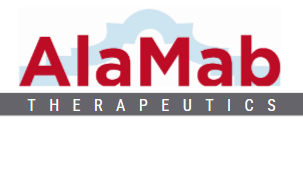预约演示
更新于:2025-05-07
GJA1
更新于:2025-05-07
基本信息
别名 connexin 43、Connexin-43、Cx43 + [14] |
简介 Gap junction protein that acts as a regulator of bladder capacity. A gap junction consists of a cluster of closely packed pairs of transmembrane channels, the connexons, through which materials of low MW diffuse from one cell to a neighboring cell. May play a critical role in the physiology of hearing by participating in the recycling of potassium to the cochlear endolymph. Negative regulator of bladder functional capacity: acts by enhancing intercellular electrical and chemical transmission, thus sensitizing bladder muscles to cholinergic neural stimuli and causing them to contract (By similarity). May play a role in cell growth inhibition through the regulation of NOV expression and localization. Plays an essential role in gap junction communication in the ventricles (By similarity). |
关联
10
项与 GJA1 相关的药物靶点 |
作用机制 GJA1抑制剂 |
原研机构 |
非在研适应症- |
最高研发阶段临床2期 |
首次获批国家/地区- |
首次获批日期1800-01-20 |
31
项与 GJA1 相关的临床试验NCT06416358
A Phase IIa, Multi-center, Single-Arm, Open-Label Study to Evaluate the Efficacy of ALMB-0168 in Solid Tumor Patients With Bone Metastatic Whose Prior Standard Treatment Have Failed
Bone metastasis is a common disease of advanced tumors. It refers to the metastasis of malignant tumors originating in a certain organ to the bones through the blood circulation or lymphatic system. The incidence of bone metastasis in breast and prostate cancer is as high as 65%-75%. Bone metastasis of malignant tumors often leads to severe bone lesions, including bone pain, pathological fractures, spinal cord compression, hypercalcemia and other bone-related events (SRE). SRE caused by bone metastasis of tumors can greatly reduce the quality of life of tumor patients. In severe cases, it can lead to rapid deterioration of the condition or even death, which greatly affects the extension of the patient's survival period. ALMB-0168 is designed to activate Cx43 hemichannels, which release key anti-cancer factors (such as ATP) into the extracellular environment. In several mouse models of breast cancer bone metastasis and orthotopic osteosarcoma, ALMB-0168 dose-dependently inhibited tumor growth and was able to extend the lifespan of tumor-bearing animals, indicating its potential as a therapeutic drug for malignant bone tumors. . Clinical research data from China and Australia show that ALMB-0168 is safe and initially effective in patients with bone metastasis and osteosarcoma;
开始日期2024-05-01 |
申办/合作机构 |
NCT06437223
A Phase 2 Study to Compare the Efficacy and Safety of Orally Administered Xiflam™ Therapy with Orally Administered Placebo in Patients with Ocular and Systemic Manifestations of Post COVID Sequelae Known As "Long" COVID
The primary objective of this study is to evaluate the safety and efficacy of Xiflam versus Placebo in patients who present with signs and symptoms of Long COVID.
Xiflam (n=10) or placebo (n=5) will be administered orally once a day (QD) for 12 weeks.
Xiflam (n=10) or placebo (n=5) will be administered orally once a day (QD) for 12 weeks.
开始日期2024-03-12 |
申办/合作机构 |
NCT05966493
A Randomized, Multicenter, Double-Masked, Vehicle-Controlled Phase 2 Study to Evaluate the Safety and Efficacy of NEXAGON® (Lufepirsen Ophthalmic Gel) in Subjects With Persistent Corneal Epithelial Defects (NEXPEDE-1)
This study is to evaluate the safety and efficacy of NEXAGON® (lufepirsen ophthalmic gel) (NEXAGON) in subjects with persistent corneal epithelial defects (PCED). The objectives of the study are to evaluate the safety and efficacy of NEXAGON in this population.
开始日期2023-08-17 |
申办/合作机构 |
100 项与 GJA1 相关的临床结果
登录后查看更多信息
100 项与 GJA1 相关的转化医学
登录后查看更多信息
0 项与 GJA1 相关的专利(医药)
登录后查看更多信息
9,774
项与 GJA1 相关的文献(医药)2025-12-01·Acta Epileptologica
Research progress of connexins in epileptogensis
Review
作者: Wei, Zhirong ; Liang, Shuli ; Wang, Jiaqi ; Kuang, Suhui
2025-08-01·Theriogenology
Tissue regression-related changes in connexin 43 and zonula occludens 1 gene and protein expression in the hen oviduct
Article
作者: Wolak, Dominika ; Sowa, Anna ; Hrabia, Anna ; Frydrych, Karolina
2025-06-01·Experimental Eye Research
Limbal explant cultures on amniotic membrane: The effects of passaging the explants on cell phenotype
Article
作者: Gurdal, Mehmet ; Selver, Ozlem Barut ; Durak, Ismet ; Baysal, Kemal
19
项与 GJA1 相关的新闻(医药)2024-11-22
摘要:缺血性中风(IS)在全球范围内导致严重的残疾和高死亡率。干细胞(SC)治疗展现出了与当前治疗方法不同的、对IS具有独特治疗潜力的特性。SC的细胞归巢、分化和旁分泌能力为神经保护带来了希望。近期对SC的改良研究增强了对IS的治疗效果,包括基因转染、纳米粒子修饰、生物材料修饰和预处理。这些方法提高了在缺血区域的生存率、归巢能力、神经分化和旁分泌能力。然而,在SC治疗可以临床应用之前,必须解决许多问题。这些问题包括生产质量和数量、运输和储存期间的稳定性,以及使用规定。在这里,我们回顾了IS的简要病理机制、SC治疗IS的“多机制”优势、各种SC改良方法和SC治疗挑战。我们旨在揭示使用SC治疗IS的潜力,克服挑战,并传达修改SC的创新思路。
干细胞微信群
扫描二维码,符合加群要求者,
即可加入干细胞治疗的微信群!
1.引言
中风是全球第二大死亡原因,2019年约有655万人死亡。中风后30天内的死亡率可达24.6%,61.0%的中风患者在12个月内死亡或残疾,导致严重的社会经济负担。大约62.4%的中风患者经历了缺血性中风(IS),这通常发生在血管闭塞抑制了大脑的充足氧气和血液供应时。由于世界人口老龄化的延长,IS的发病率正在增加。高血压、高脂血症、高同型半胱氨酸血症、高血糖、吸烟和酗酒等风险因素都可能导致IS。
另一个严重问题是,IS越来越多地影响年轻成年人,约占总患者的10%。在IS之后,应尽快通过静脉注射组织型纤溶酶原激活剂或进行机械性血栓切除术以恢复受影响区域的血流。不幸的是,溶栓药物(尿激酶、链激酶和阿替普酶)在分布上特异性较弱,而机械性血栓切除术对患者的身体状况和医院设施有广泛的要求。此外,恢复脑血流可能导致大脑的二次再灌注损伤。这种反应将进一步加剧活性氧(ROS)的产生,破坏血脑屏障(BBB),并引起炎症,从而加重病情。
然而,大多数神经保护剂仅具有单一治疗效果,且对大脑的靶向能力有限。此外,BBB阻止了大多数药物进入缺血性脑实质。因此,迫切需要具有多靶点治疗效果和高靶向能力的新药物,以满足当前的临床需求。
干细胞(SCs)可以在特定条件下增殖、自我更新,并分化成各种功能细胞。目前有许多研究正在探索SCs治疗各种疾病(如IS、肺纤维化、肝衰竭和癌症)的潜力。在这些研究中,广泛开展了使用多种SC类型治疗IS的研究。SC的强烈归巢、细胞替代和分化以及旁分泌能力为IS引入了优越的治疗效果。迄今为止,SC治疗对IS的益处已在众多研究中得到证明,其显著的治疗价值引起了广泛关注。研究人员最近专注于改良SCs以提高治疗效果并减少毒性。这些改良通常增强了SC的能力,如归巢特性、神经再生和血管生成。SC治疗为IS治疗提供了新的机会。目前有65项正在进行或已停止的关于SC治疗IS的临床试验,但均未获批准用于临床(clinicaltrials.gov)。因此,研究人员必须取得非凡的突破以解决SC治疗的局限性。因此,本综述详细描述了IS的病理机制,承认了使用SC治疗IS的优势和挑战,并专注于改良SCs以获得更好的治疗效果。我们打算揭示SCs在治疗IS中的潜力和挑战,并传达设计各种SCs以有效治疗IS的创新思路。
2.IS概述
IS是由大脑中动脉突然阻塞引起的,引发了一系列风险,包括兴奋性毒性、炎症浸润、氧化应激和凋亡。由于药物和机械性血栓溶解的发展,IS治疗已大大改善。
2.1.病理机制
在IS后缺血区域会出现一系列级联反应。了解IS的病理过程有助于提高SC治疗的疗效。由于血管阻塞,大脑经历缺氧和血液供应不足,导致下游组织缺氧和葡萄糖缺乏。通常观察到两个区域:缺血核心区和缺血半影区。核心区域的血液供应不足以维持细胞生存,尽管有补偿性侧支循环。半影区的细胞可以短期存活,半影区的受损脑组织在迅速恢复血流后可以恢复。然而,半影区长期缺氧和葡萄糖缺乏将导致ATP供应不足,鼓励异常离子泵和膜去极化。从过量释放和细胞外积累的谷氨酸,长期的异常膜去极化导致明显的兴奋性毒性。具体来说,过度激活谷氨酸相关受体导致大量Ca2+内流。随后,Ca2+依赖性酶大大放大了ROS和活性氮物种(RNS)的产生,这反过来导致脂质过氧化和DNA损伤,刺激了众多炎症因子的释放。这个过程通常伴随着线粒体功能障碍,诱导细胞色素C的释放和凋亡(图1)。
图1 缺血性中风的病理过程。
2.2.当前治疗方法
目前,IS的临床治疗主要包括以下方法:中风后使用抗血栓药物或机械性取栓术来恢复血管通畅;使用神经保护剂保护神经元免受缺血或再灌注后引起的死亡(表1)。
抗血栓药物主要包括抗血小板药物、抗凝药物和溶栓药物。由于血小板在形成血栓中起着关键作用,抗血小板治疗可以有效预防血栓形成。抗血小板药物,如氯吡格雷和阿司匹林,通常用于治疗动脉或静脉血栓的血小板粘附和聚集。相比之下,包括肝素和华法林在内的抗凝药物通常用于治疗血栓性疾病,预防血栓形成并改善预后。此外,在医生监督下,符合条件的患者可以给予尿激酶和阿替普酶溶栓药物。与抗血小板治疗和抗凝治疗不同,溶栓药物激活纤溶酶原,形成纤溶酶,直接促进血栓溶解。此外,机械性血栓切除术可以增强溶栓治疗的效果。研究已证实,将机械性血栓切除术和溶栓药物结合起来,比单独使用溶栓药物具有更好的疗效和安全性。
神经保护剂在治疗IS中至关重要。尽管它们不能恢复脑血流以减少缺血性脑损伤,但神经保护剂可以抵消缺血区域的有害分子事件。由于兴奋性毒性、氧化应激和炎症介质对IS进展至关重要,它们为神经保护治疗策略提供了广泛的靶点。神经保护剂,包括人尿激酶原、牛脑苷肽和依诺金、依达拉奉、他汀类药物和铁没食子酸配位聚合物纳米点,通过各种靶点机制发挥不同的神经保护效果。
尽管抗血栓药物和神经保护剂在临床实践中广泛使用,但它们仍有一定的局限性,并可能导致不良后果。例如,溶栓药物在分布上特异性差,出血转化风险高,治疗患者再入院率高。另一方面,大多数神经保护剂半衰期短,分布特异性差,难以穿越BBB。这些挑战阻碍了它们实现最佳治疗效果的能力。许多研究目前正在致力于确定更安全、更有效的IS治疗方法以满足临床需求。
3.SC治疗IS的现状
在过去几十年中,SC治疗的临床应用取得了显著进展,SC的增殖和分化能力为再生医学奠定了基础。尽管许多研究已经证明了SCs在治疗IS中的好处,科学家们仍在寻求改良以增强它们的治疗效果。
3.1.用于治疗的不同SC类型
各种SC已被广泛研究用于IS治疗。尽管这些SC具有不同的治疗机制,但它们在治疗IS中至关重要(表2)。
3.1.1.间充质干细胞
间充质干细胞(MSCs)可以从多种组织类型中获得,如骨髓、外周血和脂肪组织。目前,MSCs是用于治疗IS和其他疾病最广泛研究的SC群体。MSCs可以自我更新,表现出多向分化,并分化成成骨细胞、软骨细胞和脂肪细胞。然而,大量证据表明,MSCs的主要有益效果并不是因为它们能够分化成受损组织中的组织细胞;相反,它们的价值在于它们的旁分泌效应,这对IS具有强大的治疗效果。此外,MSCs可以用于自体或异体移植。移植的MSCs通过旁分泌途径产生许多治疗性生长因子,如血管内皮生长因子(VEGF)和肝细胞生长因子(HGF)。有趣的是,在这一过程中,MSCs还分泌富含各种治疗性微小RNA(miR-133b和miR-184)和生长因子的细胞外囊泡(EVs)。这些因子和EVs随后发挥多靶点治疗效果,如抗炎、抗凋亡、促血管生成和神经生成。
MSCs的易于培养和低免疫原性使它们成为最常用的SCs。然而,需要几周的体外培养才能获得用于免疫系统治疗所需的MSCs数量。对于体外扩增的MSCs,冷冻保存可以维持它们的活性和功能。不幸的是,MSCs的冷冻保存和复苏可能会损害它们的活力、膜完整性和体内持久性,特别是在静脉注射后。由于其他SC的应用也遇到这些问题,MSCs仍然相对更接近临床应用的成功。
3.1.2.神经干细胞
神经干细胞(NSCs)源自中枢神经系统,它们能够自我更新并分化成多种配置,如神经元、星形胶质细胞和少突胶质细胞。由于它们能够分化成神经元,NSCs对缺血性卒中(IS)患者发挥着重要的神经保护作用。此外,NSCs通过旁分泌途径分泌各种神经营养因子,这有助于它们的治疗效果。例如,NSCs可以在大脑中动脉闭塞(MCAO)的小鼠模型中增强脑源性神经营养因子(BDNF)的表达。同时,杨等人证明,NSCs的条件培养基改善了神经缺陷,减少了脑梗死体积,同时保持了线粒体的超微结构。这些发现表明,NSCs可以通过分泌各种营养因子来进行治疗。在移植到恶劣的微环境中后,只有少数外源性NSCs能够存活。这种情况是SC治疗中的一个常见问题,设计适当的方法以提高缺血区域各种SC存活率是一个关键的探索领域。然而,使用NSCs的潜在伦理问题也限制了它们的应用。令人兴奋的是,研究表明NSCs没有肿瘤形成的风险。从鼠、大鼠或其他动物胚胎干细胞(ESC)系中获得的NSCs在移植到正常裸鼠动物后不会形成肿瘤。
3.1.3.胚胎干细胞
胚胎干细胞(ESCs)源自胚胎或胚泡,具有强大的分化潜力。ESC移植是治疗神经系统疾病,如缺血性卒中(IS)的理想方法,主要是因为它们可以分化成三个神经系统:神经元、星形胶质细胞和少突胶质细胞。基于ESCs的细胞治疗可以促进神经再生,减少小鼠IS的梗死区域,并改善中风后的感觉和行为恢复。此外,源自ESCs的小外泌体(ESC-sEVs)对IS过度激活的免疫微环境具有强大的免疫调节能力。ESC-sEVs可以显著减少IS后的炎症细胞因子、白细胞浸润和神经元死亡表达。所有这些特性表明ESCs是IS的潜在治疗剂。然而,一些研究表明,人类ESCs衍生的神经细胞有发展成畸胎瘤的风险。此外,由于ESCs的来源是胚胎,因此存在潜在的破坏胚胎的伦理问题。尽管ESCs具有出色的治疗效果,但这些恶性转化风险和伦理问题限制了它们的应用;因此,它们在治疗IS中的应用将非常有限。
3.1.4.牙髓干细胞
牙髓干细胞(DPSCs)是围绕牙髓血管的多能SCs,源自神经嵴,可以分化成神经元、肌肉和软骨。一些研究报告称DPSCs可用于治疗IS,包括促进认知功能恢复,鼓励神经元分化和血管生成,减少梗死区域,并发挥抗炎作用。DPSCs对IS的巨大治疗效果可能归因于它们的神经系统起源。尽管先前的研究已经验证DPSCs可以分化成神经元并与脑组织整合,但只有少数DPSCs能在缺血区域存活,大多数分化成星形胶质细胞。因此,IS治疗更可能通过旁分泌途径而非细胞替代和分化来整合DPSCs。DPSCs还可以通过抑制过度激活的T细胞反应发挥有效的免疫调节特性。由于从废弃牙齿中分离DPSCs的便利性,伦理问题不是问题。此外,DPSCs由于分化能力较弱,没有肿瘤形成的风险。从牙齿中提取DPSCs及其外泌体用于IS治疗是有希望的未来治疗选择。然而,需要进一步研究DPSCs治疗IS及其早期临床转化。
3.1.5.诱导多能干细胞
诱导多能干细胞(iPSC)技术指的是重新编程终末分化因子,最初由Takahashi和Yamanaka在2006年开发。他们发现,通过重新编程人类和小鼠的成纤维细胞,可以生成类似于ESCs的iPSCs。这项研究的结果揭示了基础研究、药物研究开发和SC治疗中充满希望的多能SC潜力。iPSCs在治疗IS方面表现出多种效果,包括迁移到缺血性脑组织,分化成神经元,促炎因子下调,抗炎因子上调,最终改善运动功能。同时,iPSCs增强了低剂量组织型纤溶酶原激活剂的溶栓效果。最近的一项研究发现,源自iPSCs的小外泌体可以恢复老年小鼠的血脑屏障,预防IS的发生。有趣的是,从iPSCs衍生的NSCs(iNSCs)可以分化成神经元、少突胶质细胞和星形胶质细胞,展现出显著的神经保护效果。此外,从iPSCs衍生的其他SCs在MCAO大鼠模型中显示出相同的治疗效果,包括调节炎症和免疫反应,促进神经分化。iPSCs直接源自患者,行为类似于ESCs,克服了免疫排斥和伦理问题。不幸的是,有报道称MCAO大鼠在iPSC移植后四周形成了畸胎瘤,这是限制其临床应用的主要原因。近年来,移植前使用多能细胞特异性抑制剂可以显著抑制畸胎瘤形成,提高iPSC在未来IS治疗中的安全性。目前,有65项SC治疗IS的临床试验,其中一半以上的临床试验集中在中国和美国(图2A)。其中,有15项正在进行或即将进行的临床试验,包括11项针对MSCs和2项针对NSCs,这进一步说明了实施MSCs和NSCs治疗IS的科学兴趣和优势(图2B)。然而,大多数关于其他SCs的临床试验已经完成或撤回,需要进一步调查以确定它们的效果。(来源:https://ClinicalTrials.gov)
图2 干细胞治疗缺血性中风的临床试验。(A) 通过搜索“stem cell | ischemic stroke”找到的65项研究的地图。来源:https://ClinicalTrials.gov。(注:由于网络原因,无法解析上述网页内容,可能是链接问题或网络连接问题,请检查链接的合法性并适当重试。)(B) MSCs、NSCs或其他SCs的临床实验状态和数量。
3.2.SCs在IS中的治疗机制
许多研究已经调查了SCs对IS的神经保护效果,主要涉及细胞迁移、细胞分化、细胞替代、旁分泌效应等方面,以及其他方面,如促进线粒体转移。
3.2.1.迁移
干细胞(SCs)在治疗缺血性卒中(IS)中被广泛研究,因为它们自然地靶向缺血损伤区域。SCs首先必须穿过血脑屏障(BBB)才能到达这些缺血区域。BBB由基底层、外周细胞和星形胶质细胞组成,能够维持大脑的稳定微环境。SCs穿过内皮细胞层并被招募到缺血组织中的确切机制尚未建立。尽管如此,越来越多的证据表明,基质细胞衍生因子1α(SDF-1α)与其受体趋化因子受体C-X-C趋化因子受体4(CXCR4)之间的相互作用对于控制细胞迁移至关重要,CXCR4在SCs表面高度表达。中风后,大量SDF-1α在缺血区域释放,对表达CXCR4的SCs具有强大的招募效应,并实现目标结果。有趣的是,研究发现缺氧诱导因子-1(HIF-1)可以调节SDF-1基因表达。增加HIF-1α的表达可以提高SCs在缺血区域的存活率,这在一定程度上解释了为什么某些缺氧预处理可以增强SC归巢。
目前,许多针对IS的靶向治疗基于SDF-1α-CXCR4轴。不幸的是,通过SDF-1α-CXCR4轴,中性粒细胞和巨噬细胞也被招募到缺血区域,加剧炎症浸润。因此,史等人将SCs与Fe3O4共孵育,增强SC膜上CXCR4的表达,用于构建仿生载体。CXCR4过表达的仿生载体同时实现了靶向治疗并切断了缺血区域炎症细胞的招募。其他信号影响SC归巢,如c-MET信号。此外,大脑炎症降低了BBB紧密连接完整性的保护,允许SCs通过细胞间隙途径通过形态变化穿过BBB。
总之,积极归巢到缺血区域是SCs发挥治疗效果的前提和关键因素。此外,增强SCs的归巢能力将扩大它们的治疗能力,这是SC修饰的一个重要课题。
3.2.2.分化和替代
SCs的神经修复功能直接体现在它们分化成新的神经细胞和替代受损神经组织上,这确保了神经传导路径的完整性。由于它们强大的分化能力可以恢复正常的神经传导,NSCs可以替代受损的神经元、星形胶质细胞或少突胶质细胞。外源性SC移植也可以通过补偿分化引起的神经细胞损失来实现这种神经保护效果。此外,先前的研究已经证明,SCs归巢到缺血区域将分化成成熟的神经元,形成新的神经回路。这种强大的神经元分化通过移植后两个月超过50%的SCs表达神经元表型得到证明。
在分化成神经元的同时,位于缺血区域的SCs还可以通过与外周细胞、内皮细胞和星形胶质细胞相互作用修复受损的BBB,以加速神经回路重建。尽管SCs的确切神经分化机制尚未得到普遍认可,但Wnt/β-Catenin信号可能是SC自我分化的突出因素。这条途径可以促进NSCs分化成神经元而不是星形胶质细胞。
总之,由细胞分化引起的神经发生和细胞替代引起的神经回路重建可能是SCs改善IS后神经功能机制。SCs不能用于治疗IS的主要原因之一是它们神经分化能力不足。
3.2.3.旁分泌
SCs可以通过分泌各种治疗因子,包括外泌体、生长因子、趋化因子和细胞因子,加速神经功能的恢复。SC旁分泌功能体现在以下几点:
1.SCs可以通过分泌神经营养因子促进神经发生,如神经生长因子(NGF)、胰岛素样生长因子1(IGF-1)、胶质细胞源性神经营养因子(GDNF)和BDNF。例如,BDNF可以通过与酪氨酸激酶受体相互作用促进神经发生。
2.SCs可以通过分泌促血管生成因子,如Notch 1、碱性成纤维细胞生长因子(bFGF)、肝细胞生长因子(HGF)、血管生成素-1(Ang-1)、Ang-2和VEGF,促进血管生成。例如,VEGF可以通过促进未成熟血管的形成和内皮细胞的迁移和增殖来促进血管生成。
3.SCs可以通过改善炎症因子分泌发挥重要的免疫调节和炎症调节效应[110]。研究表明,SCs可以分泌关键的转化生长因子-β(TGF-β),减轻缺血脑组织中的免疫反应,降低因细胞死亡引起的梗死区域单核细胞趋化蛋白-1(MCP-1)水平,并抑制BBB损伤引起的大量CD68+免疫细胞浸润。此外,SCs可以通过上调抗炎细胞因子和下调促炎细胞因子来调节炎症环境。例如,SCs通过增加IL-10表达和减少肿瘤坏死因子-α(TNF-α)、白细胞介素-1β(IL-1β)和IL-6表达来调节炎症环境。有趣的是,调节性T细胞(Tregs)刺激缺血区域SCs的增殖,但阻断抗炎细胞因子IL-10将影响这一过程。
4.SCs通过上调抗凋亡(即Livin)和下调促凋亡(即Caspase-3)蛋白分泌,在缺血区域抑制神经元凋亡。同时,研究表明SCs也可以通过分泌粒-巨噬细胞集落刺激因子(GM-CSF)、B淋巴细胞-2(Bcl-2)和其他分子来抑制凋亡。其中,造血生长因子GM-CSF可以提高细胞存活率。除了直接的抗凋亡效应外,SCs还分泌多种神经营养因子,如BDNF、VEGF和前面提到的神经营养因子,以增强神经元存活。
SCs的旁分泌功能进一步确立了它们作为治疗IS的有利“药物”。因此,研究人员一直在追求提高SCs的旁分泌能力,以最大化它们的治疗优势。
3.2.4.线粒体转移
除了上述机制,干细胞(SCs)还可以通过线粒体转移来促进神经功能恢复。中风后,神经细胞中的大量线粒体将受损,触发线粒体自噬以确保线粒体质量。通过线粒体吞噬作用去除受损线粒体将减少活性氧(ROS)的产生,并改善缺血区域的恶劣微环境。ROS指的是体内的含氧活性物质,过量的ROS会诱导脂质过氧化和细胞损伤。尽管这部分改善了微环境,但过度的线粒体自噬可能导致受损神经元的消化和死亡。基于这些观察,将健康的线粒体转移到受损细胞是一种有前景的潜在治疗方法。许多研究已经证实,SCs可以作为线粒体供体来维持细胞线粒体平衡。SCs的线粒体转移依赖于形成Cx43调节的间隙连接通道。Cx43表达增强的SCs的线粒体转移效率几乎是正常SCs的两倍,而Cx43基因表达沉默的SCs几乎不发生。总之,将健康的线粒体传递到缺血区域的受损细胞是一种有前景的治疗技术,SCs具有出色的线粒体传递能力。然而,关于如何扩大SCs的线粒体传递效果的研究仍处于初期阶段。因此,确定SCs线粒体传递的多个信号通路是必要的。3.3.修饰方法
3.3.1.基因转染修饰
基因转染已广泛纳入基因组功能和基因治疗研究。这种技术通过将特定基因转移到细胞中来调节基因表达,最终增强或抑制特定功能。SCs的基因转染主要用于提高其治疗能力。例如,VEGF基因转染可以增强SCs的血管再生能力。一些miRNA,如miR-124,也通过促进它们分化为成熟的神经元来提高SC的治疗功能。此外,可以在SCs上进行CXCR4基因转染以增强它们的归巢能力。使用生物响应材料作为基因载体来增强SC治疗效果也已被广泛实践。例如,我们使用ROS响应材料聚[(2-丙烯酰氧基)乙基(对硼酸苯甲酸苄基)二乙基铵溴化物](B-PDEA)作为BDNF基因载体来转染NSCs(图3A)。BDNF随后与酪氨酸激酶受体相互作用以促进神经元存活。结果表明,B-PDEA转染增加了SCs分泌的BDNF(图3C)及其在脑匀浆中的含量(图3D)。杨等人生产了一种非病毒基因载体,钙金属有机框架(Ca-MOF),并将其用于SC miRNA传递以获得更好的IS治疗效果(图3B)。Ca-MOF保护目标基因(图3E)并帮助miRNAs指导SC神经分化(图3F)。在SC基因转染过程中应仔细考虑条件。研究强调细胞形态影响转染效率。细胞形态的扩展和延伸有利于转染,且扩展良好的SCs具有更高的转染效率。粘附面积越大,转染效率越高。相比之下,细胞扩散面积对转染效率的影响相对较小。此外,载体的选择显著影响SC基因转染。病毒介导的转染是临床实践中广泛使用的基因修饰方法。尽管病毒载体具有高转染效率和使用方便的优势,但免疫原性和细胞毒性限制了它们的应用。非病毒载体已被广泛研究以避免安全问题,包括基于介孔硅和基于硅的金纳米颗粒。这些材料缺乏突变原性,但会引起促炎反应和低转染效率。这些因素在选择转染载体时需要权衡,科学家们预计将取得进一步突破,以实现高转染效率,同时避免细胞毒性。
图3 SCs的基因转染。(A) 用于BDNF转染的ROS响应型B-PDEA作为基因载体的示意图。(B) 用于miRNA-124转染的核酸酶保护型Ca-MOF作为基因载体的示意图。(C) 使用B-PDEA或PEI转染的NSCs中BDNF的累积表达。(D) 不同干细胞治疗后MCAO小鼠脑匀浆中BDNF的总量。版权所有2019 Wiley-VCH。(E) 在模拟核酸酶降解过程中Ca-MOF@miR-124或裸露miR-124的miR-124表达。(F) 在不同处理下5或10天NSCs的神经元分化标记和胶质细胞分化标记的表达。版权所有2022美国化学会。数据以均值 ± 标准差的形式呈现。
3.3.2.无机纳米颗粒修饰
已经开发了许多基于纳米颗粒的药物/基因传递系统。使用纳米颗粒修饰SCs以获得更好的IS治疗效果已得到许多研究的证实。关于纳米颗粒修饰SCs的研究主要集中在提高SCs的归巢能力。中风后,SCs上CXCR4的过表达将通过SDF-1α-CXCR4轴提高细胞归巢效率。各种基于铁的磁性纳米颗粒(MNPs)已积极增强CXCR4表达(图4B和4C);然而,通常需要外部磁场优化以增加SC对这些基于铁的MNPs的吸收。基于这一限制,我们发明了类似磁小体的1D铁磁性氧化铁纳米链(MFION)(图4A),这是一种链状非病毒载体,有利于细胞吸收,无需外部磁力。同时,MFION在SCs上过表达CXCR4,增强SC在缺血区域的归巢(图4D-4F)和治疗效果。此外,用MNPs处理的SCs可以通过外部磁吸引靶向缺血区域。这些基于铁的纳米颗粒也可以用作基因转染的基因载体,包括超顺磁性氧化铁纳米颗粒(SPION)和MFION。纳米颗粒还被修饰以增强SC的其他能力。例如,唐等人开发了一种黑色素纳米颗粒,通过上调抗氧化防御和抑制凋亡,增强MSCs对抗缺氧缺血损伤的治疗能力。有趣的是,纳米颗粒修饰的SCs可以增强在IS治疗期间的生存和神经分化能力。其中,通过功能肽和SPION自组装形成的纳米颗粒被传递到细胞内,功能肽上调HIF-1α并诱导更高的NSC存活率。此外,Fe3O4纳米颗粒被用作“桥”连接抗氧化层与SCs,实现更高的SC存活率。
图4 通过纳米颗粒修饰SCs。(A) 基于MFION工程化MSCs用于缺血性中风治疗的示意图。(B) MSCs表面受体在与IO MNPs共孵育2小时后有无表达情况。(C) MSC CXCR4在不同浓度的IO MNPs孵育不同时间后的表达情况。版权所有2014美国化学会。(D) 不同纳米颗粒处理后MSC CXCR4的表达情况。(E) 用不同纳米颗粒处理的MSCs对SDF-1α的迁移能力。(F) 用不同纳米颗粒处理的MSCs对缺血性大脑的归巢能力。版权所有2019 Wiley-VCH。
了解移植的干细胞(SCs)在体内的迁移、分布和存活对于基础研究和临床干细胞转化至关重要。纳米颗粒也被广泛用于长期追踪治疗缺血性卒中(IS)的SCs。例如,磁共振成像(MRI)可以准确监测用基于铁的磁性纳米颗粒(MNPs)标记的间充质干细胞(MSCs)的体内行为。最近,铁氧体纳米环被报道作为一种追踪器,通过局部诱导热增强膜通透性有效地标记MSCs,用于MRI追踪和靶向IS治疗。此外,徐等人设计了一种动态增强的双模追踪系统,以改善高ROS微环境并监测长期IS治疗期间MSCs的体内命运。与其他纳米颗粒修饰不同,这项研究中的纳米颗粒锚定在SC膜上,而不是被SCs内化。此外,SCs的动态命运可以被监测长达28天。磁性纳米气泡(MNBs)可以用于长期SC追踪。李等人将MNPs组装成MNBs,然后被NSCs内化,实现MRI和超声成像监测。同时,MNPs可以通过上调BMP2/Smad信号通路指导NSCs分化为神经元表型。
总之,各种纳米颗粒增强了SCs的治疗能力,并使其在体内的行为得以追踪。预计功能性纳米颗粒的进一步开发将增强SCs在IS治疗中的治疗效果。
3.3.3.生物材料修饰
一些研究已经验证了生物材料可以调节SC行为,如多肽和水凝胶。用天然或合成的特殊功能材料修饰活细胞表面,在生物医学领域开辟了新的研究前景。目前,生物材料修饰旨在加强SC在缺血区域的归巢能力或存活率。某些生物材料可以增强SCs的归巢能力。例如,我们的研究表明,将棕榈酸肽涂覆在MSCs上可以改善导向,增加缺血组织中的MSC数量,并减少在周围组织的分布(图5)。在另一项研究中,脂质-PEG(lipo-PEG)链接的重组CXCR4非侵入性地覆盖在MSCs表面,以治疗缺血性心肌病。尽管这种表面修饰尚未应用于IS治疗,但它改善了MSCs对SDF-1的梯度迁移,表明其有可能增强对IS的治疗能力。总体而言,用生物材料修饰SCs已被证明可以改善SCs对缺血区域的靶向能力。同时,SCs的生物材料修饰可以提高它们在缺血区域的存活率。最近,徐等人通过设计脂质微胶囊来诱导自噬,解决了NSCs在缺血区域的低存活率问题。脂质微胶囊为NSCs提供了物理屏障,并增强了NSCs的自噬流,减少梗死体积,减轻脑水肿,并最终提高模型小鼠的存活率。许多最近的研究集中在抗ROS材料上,以保护SCs免受损害。例如,设计了一种可降解ROS的可注射PEG水凝胶,以增强SCs的保留和抗氧化保护。已经开发了各种生物材料以增强SCs的归巢能力和在缺血区域的存活率。预计开发更多功能性生物材料以增强SCs的治疗能力。
图5 通过生物材料修饰SCs。版权所有2017 Elsevier。
3.3.4.预处理修饰
不同的处理条件和培养环境可以改变SCs的特性和体外及体内的治疗作用。最近,有许多关于三维(3D)培养和各种SCs预处理的研究。与传统培养方法相比,3D培养显著提高了SCs对IS的治疗作用。与2D培养最显著的区别是,3D使用定制的3D人工基质来模拟SCs的自然环境,更好地反映细胞内环境。最直接的表现是,3D培养中整个细胞表面会发生细胞吸附,而2D培养中只有与培养表面接触的细胞侧面发生细胞吸附。研究表明,与2D培养的SCs相比,通过尾静脉注射的3D培养SCs显著降低了促炎细胞因子水平、小胶质细胞和脑梗死体积,同时增加了缺血区域的SCs。同时,对损伤部位小胶质细胞的RNA测序证明,3D培养的MSCs对IS的治疗作用更大,可能通过抑制小胶质细胞激活(图6L)。此外,将SCs组装成3D多细胞球体可以改善它们的旁分泌效应,有利于移植细胞的存活和治疗效果。徐等人证明,将MSCs和人脐静脉内皮细胞(HUVECs)组装成3D球体显著提高了细胞活性和保留。与MSCs/HUVECs悬浮液相比,移植的3D球体具有显著的神经保护、促血管生成和抗瘢痕能力。这种3D球体促进了旁分泌因子的表达和分泌水平,最终在MCAO小鼠中实现了显著的大脑结构和运动功能恢复(图6R)。通常涉及缺氧的SC预处理,在移植前已被广泛研究以提高治疗效果。例如,缺氧预处理MSCs(HP-MSCs)最直接的影响是增加与迁移相关的蛋白表达(如CXCR4)。与在正常氧气中培养的MSCs相比,HP-MSCs显示出增强的迁移能力到缺血区域,并在感觉-运动功能测定的粘附去除测试中表现更好。胡等人列出了不同氧气含量的缺氧培养环境对SCs的影响,包括1%氧气含量以防止MSCs凋亡和2%氧气含量以减少MSCs的肿瘤潜力。
图6 SCs的预处理。SCs在3D培养或3D球状体中的潜在作用。(左) 3D-MSC发挥更强治疗效果的潜在机制。经许可转载。版权所有2021 Springer Nature。(右) (a) MSCs(红色)和HUVECs(绿色)混合的3D细胞球状体的代表性共聚焦Z堆叠图像。(b) BDNF、(c) VEGF和(d) IGF-1在细胞悬浮液(cell sus.)或3D细胞球状体(3D cell sph)中的浓度。(e) 在正常条件或缺氧和葡萄糖剥夺条件下培养的cell sus.和3D cell sph的细胞活性。比例尺,100微米。版权所有2021 Elsevier。
同时,研究表明0.1%至0.3%的氧气会促进生长因子的分泌,包括VEGF、GDNF和BDNF,促进神经发生和神经功能恢复。我们最近的工作发现,神经干细胞(NSCs)的低氧预处理可以通过调节外泌体中miRNA的表达水平来增强缺血性卒中(IS)治疗的益处,进一步展示了低氧预处理干细胞(SCs)的广泛治疗优势。除了低氧预处理,缺血性脑组织预处理也会调节体内SC的行为,包括促进CXCR4的表达以促进归巢和生长因子的释放(图7B和7C)。
图7 SCs的预处理。(A) 用或不用阿托伐他汀预处理的MSC CXCR4的流式细胞术结果。经[22]许可转载。版权所有2022 Springer Nature。(B) 未经预处理的MSCs(FBS-MSCs)、用正常脑组织预处理的MSCs(N-MSCs)和用缺血脑组织预处理的MSCs(S-MSCs)表面上CXCR4的表达。比例尺:50微米。(C) FBS-MSCs、N-MSCs和S-MSCs各种旁分泌因子的表达。版权所有2022 MDPI。
用某些药物预处理SCs也能提高它们的治疗效果。例如,用阿托伐他汀预处理间充质干细胞(MSCs)可以通过调节miR-124a/CXCR4信号通路来增强它们的归巢能力(图7A)。同样,一些细胞因子预处理,包括IL-1β,可以通过增加MSCs中各种细胞因子(TNF-α)、趋化因子(CXCL1)和粘附分子(细胞间细胞粘附分子-1(ICAM1))的表达来改善MSC的迁移。尽管一些药物或细胞因子预处理尚未应用,这些预处理方案可能会改善IS治疗。
总之,SC预处理(如缺血、低氧、药物和细胞因子,可能是治疗脑缺血损伤的有效策略。
4.挑战与展望
随着SC治疗IS的深入研究,提高SC产品的生产效率、质量和安全性的重要性也必须被强调。
4.1.生产挑战
由于细胞疗法的快速发展,对SC的需求前所未有,每年MSC的使用量接近3000万亿。提供的数据表明,成功的SC治疗需要大约1×10^9个细胞,但原始收集的SC数量有限。收集SC是一个成熟的工业项目;因此,必须通过充分的体外扩增来获得大量的SC以满足临床应用所需的细胞需求。然而,这种体外扩增耗时且需要数周时间。因此,开发新的培养技术以加快SC的体外扩增对于有效的临床治疗应用至关重要。
在制造SC时必须考虑质量。良好的生产实践(GMP)确保了药品生产的质量管理并最小化风险。一些学者已经详细描述了用于治疗的GMP级SC的生产。这个过程主要包括细胞鉴定、活性、生长活性、纯度、均匀性、异常免疫反应、致瘤性、生物效力测试、无菌测试以及检测支原体、细胞内外病原体、内毒素、培养基及其他添加剂的残留量。GMP级SC生产耗时且成本高;然而,它显著提高了SC治疗的质量和安全性。这一要求需要考虑如何在快速SC生产中降低生产成本并确保质量。
最近出现了许多SC企业,包括贝克生物和中源协和细胞技术有限公司。这些公司管理细胞收集、处理、储存和分销,形成了完整的SC产业链。此外,各种大型SC企业已经开发出基于3D微载体的大规模SC制备工艺,以满足高质量和大规模SC生产的需求。SCs在由3D微载体形成的模拟生理微环境中培养,这确保了细胞的基本质量属性和制剂稳定性。然而,在大规模制备过程中如何完全去除3D微载体,同时遵守临床应用的安全标准,仍然是一个问题。
4.2.稳定性挑战
SC的储存和运输条件将显著影响其稳定性。生产的SC将在4-10°C的冷链中运输以维持其活力,这增加了成本。大多数医院可能会在临床试验期间现场准备SC。然而,如果SC作为标准治疗方法的需求增加,医院可能无法维持自给自足的生产SC,因此仍需要外部制造商供应特定产品,使SC的运输变得不可避免。
尽管在-70°C至-196°C的冷冻保存可以维持SC的活性和功能稳定性,但使用液氮在极低温度下运输它们成本高昂,冷冻保存试剂DMSO可能具有毒性。
在环境条件下运输可能是一个可行的解决方案。先前的研究表明,哺乳动物细胞直接悬浮在培养基中,在从英国运输到中国超过36小时的环境温度下保持高活性。这些结果比使用冰袋运输的结果要好得多。有趣的是,形成SC球体可以保护SC活性,并促进在环境温度下长期储存和运输。然而,SC球体的形成需要大量的时间、财政资源,并在使用前增加处理成本。因此,需要进一步优化SC的储存和运输条件,以建立较低的运输成本并确保SC的稳定性。
4.3.使用挑战
4.3.1.使用前的预处理
即使克服了上述限制,SC治疗仍需要特定的专业操作。例如,低温储存的SC在使用前必须重新加热以恢复活性。不幸的是,冷冻保存和使用前的复苏会破坏SC的活力和细胞膜,可能减少静脉注射后体内持久性。此外,在此操作中应特别注意重新加热速率,以确保冷冻SC的存活。一般来说,重新加热速度越快越好。最终,提高SC在处理过程中的存活率和活性仍然是一个需要讨论的问题。
4.3.2.给药途径
尽管大多数IS治疗研究的方法是静脉注射,但对SC给药途径尚无统一看法。与其他给药途径相比,静脉注射是最简单、最安全的方法,侵入性最低。然而,通过这种方法只有少数细胞能够到达大脑的缺血区域,细胞在非靶器官中的积累成为一个问题。研究已经证明,颅内注射可以直接将SC输送到缺血区域,并对IS有良好的治疗效果。尽管如此,其相当大的侵入性和造成额外脑损伤的风险限制了其使用。此外,一些研究已经证明,动脉注射在将细胞输送到缺血半球方面比静脉注射更有效。然而,如果细胞团块阻塞动脉,将发生额外的缺血损伤。必须注意,不应低估注射操作的副作用,因为SC可能因注射过程中用力过猛而立即死亡。优化给药途径或加强SC的“保护”应该是研究的重点。
4.3.3.剂量
“移植的干细胞越多越好”的观点是错误的。研究已经证明,移植额外的干细胞并不能改善细胞在微环境中的存活或产生显著的治疗效果。此外,单剂量过大可能会导致血管栓塞风险。尽管移植数量不应尽可能高,但需要考虑产生目标治疗效果所需的特定干细胞浓度。值得注意的是,不同的间充质干细胞(MSCs)剂量可能会对缺血性卒中(IS)产生不同的治疗效果。与其他剂量相比,低剂量(1×10^6个细胞)更能恢复神经功能,高剂量(2×10^7个细胞)则更能抑制小胶质细胞激活。此外,由于患者个体差异和病程不同,给所有患者相同数量的干细胞是不可能的。这一观察提醒我们,移植的干细胞浓度既不宜过低也不宜过高,需要优化个体化治疗剂量,并建立更精确的剂量关系。
4.3.4.治疗时间窗
控制时间对于干细胞治疗的效果也是至关重要的。一方面,离开库后12小时内的新鲜干细胞将保持良好活性。另一方面,IS治疗的时间窗是紧凑的。在局灶性缺血后24小时内进行干细胞移植可以显著减少损伤体积并改善运动功能障碍。相比之下,在IS后24小时进行干细胞移植会减少潜在的治疗效果。此外,在此时间框架之外进行干细胞移植与MCAO组相比,在梗死大小上没有显著差异。尽管干细胞治疗的干预时间窗比组织型纤溶酶原激活剂的静脉注射时间窗更长,但它仍然面临时间框架不可控的挑战。无论是对于干细胞本身还是卒中患者,这些时间框架都是非常具有挑战性的。因此,延长维持干细胞活性的时间框架和优化干细胞治疗IS的时间窗是至关重要的。
5.结论
干细胞治疗IS的能力已被广泛报道,并显示出与传统方法相比的卓越优势,特别是在实施各种机制时。其中,修改干细胞以实现更好的治疗效果无疑是研究者目前的焦点,并且已经取得了一些突破。然而,尽管干细胞治疗存在一些共同问题,但在临床转化方面仍面临许多挑战。3D微载体技术等技术已迅速发展,以克服干细胞临床应用的限制。我们期待新兴技术加速干细胞治疗的临床转化,并使干细胞能够应用于患者。此外,我们期望揭示干细胞在治疗IS中的潜力,为干细胞转化提供新思路,并期待这些挑战尽快得到解决。
识别微信二维码,添加生物制品圈小编,符合条件者即可加入
生物制品微信群!
请注明:姓名+研究方向!
版
权
声
明
本公众号所有转载文章系出于传递更多信息之目的,且明确注明来源和作者,不希望被转载的媒体或个人可与我们联系(cbplib@163.com),我们将立即进行删除处理。所有文章仅代表作者观点,不代表本站立场。
细胞疗法临床结果
2024-09-02
Sublingual NAD+ is the new gold standard for daily NAD+ supplementation, without the need for precursors
SINGAPORE, Sept. 1, 2024 /PRNewswire/ -- iX Biopharma (the "
Company"), a specialty pharmaceutical company specializing in drug delivery systems and a leader in innovative healthspan nutraceuticals, has announced groundbreaking results from a pharmacokinetic study evaluating the sublingual absorption of a novel NAD+ wafer, SL-NAD+. This study is the first to provide compelling evidence that NAD+ can directly enter cells, offering a promising new approach to NAD+ supplementation.
The study consisted of 3 parts: 2 single-dose PK studies and a multiple-dose PK study, conducted in 18 Sprague-Dawley rats, examining the plasma and red blood cell NAD+ levels following sublingual administration of NAD+. Assessment of NAD+ levels were done via the LC-MS/MS method, one of the most advanced and reliable methods to test for NAD+.
The results revealed several important findings:
First evidence of direct cellular entry
: The study strongly suggests that NAD+ can be transported in and out of cells directly (NAD+ flux), most probably via connexin 43 hemichannels and other solute carrier channels. This is the first in-vivo study to provide evidence supporting this capability.
Rapid sublingual absorption: Mean peak plasma concentration, a 2-fold increase in plasma NAD+ levels, was achieved within 10 minutes of dosing. This underscores the effectiveness of sublingual delivery through the mucosa.
Significant bioavailability
: The findings suggest a sublingual bioavailability of SL-NAD+ at 22% compared to intravenous (IV) administration. This provides a promising alternative to IV NAD+ therapy, with the potential for more convenient and sustained NAD+ delivery.
Dr. Janakan Krishnarajah, Chief Operating Officer and Chief Medical Officer of iX Biopharma, said: "This study's findings provide strong evidence that our innovative sublingual freeze-dried technology delivers NAD+ rapidly into plasma and then directly into cells, challenging the previously held belief that its large size prevents cellular penetration. Along with the positive data from our recent human clinical study, this breakthrough positions direct NAD+ supplementation as the new gold standard for boosting NAD+ levels, removing the need for precursors."
About NAD+ and SL-NAD+
NAD (nicotinamide adenine dinucleotide) is a critical molecule in our body responsible for vital cellular functions in the body. It is crucial for energy production, cellular metabolism, DNA repair, regulating sleep cycles and promoting healthy aging. NAD+ levels decrease as we age, with levels typically dropping to half by the time we reach 50. The decline in NAD+ levels with age is linked to various age-related health concerns and metabolic disorders. In recent years, NAD+ has become an important focus in scientific research on aging, with maintenance of adequate NAD+ levels being linked to healthy aging and longevity. Clinical trials have also been conducted to investigate the potential of NAD+ in treating various age-related diseases, such as Type 2 Diabetes, Non-Alcoholic Fatty Liver Disease, neurodegenerative diseases like Parkinson's disease, cardiovascular and skeletal muscle diseases.
Despite its potential, NAD+ has been challenging to utilise effectively, other than through IV. Alternative ways to boost NAD+ levels with NAD precursors, like NMN and NR, may be inefficient due to bioavailability and other issues, such as inefficient conversion to NAD+ due to age-related declines in enzyme activity.
SL-NAD+ is a novel sublingual wafer that delivers NAD+ directly into the bloodstream, bypassing the digestive system to ensure higher bioavailability and significantly boosting intracellular NAD+ levels. The Company's proprietary freeze-drying process and patented wafer formulation stabilises NAD+ and delivers them as nanoparticles, ensuring rapid disintegration, release, and absorption through the sublingual mucosa. SL-NAD+ is available for purchase on and through select specialist clinics in Singapore.
About iX Biopharma Ltd
iX Biopharma is a specialty pharmaceutical and nutraceutical company listed on the Catalist board of the Singapore Exchange Securities Trading Limited (SGX-ST), operating a fully integrated business model from drug development to manufacturing and supply, with facilities in Australia. The Group is focused on the development and commercialisation of pharmaceutical drugs and innovative nutraceuticals using novel, patent-protected formulations for sublingual delivery.
iX Biopharma has developed a number of drug delivery platform technologies, including WaferiX, WaferlogiX and NADiX, which deliver small molecule and biologics sublingually via the mucosa for better absorption, faster onset of action and predictable effect. The drug delivery platforms are particularly useful for drug repurposing, where existing approved drugs are developed into new drugs targeting different indications or a different route of administration, at a lower development cost and risk. iX Biopharma's portfolio includes among others, ketamine, dexmedetomidine, medicinal cannabis and nutraceuticals designed to improve healthspan and longevity.
SOURCE iX Biopharma
临床结果
2024-08-08
摘要:类器官是一种3D细胞组织,能够重现原生组织的某些结构和功能。近期的研究使得类器官作为研究组织发育、药物发现和潜在临床应用的宝贵模型而日益受到重视。体外成功培养类器官的要求与传统的单层细胞培养大相径庭。生成和成熟高保真类器官需要开发和优化环境条件,以提供生长和3D成熟的最佳线索,如氧合、机械和流体激活、营养梯度等。为此,我们讨论了用于类器官培养的四大类生物反应器:搅拌生物反应器(SBR)、微流控生物反应器(MFB)、旋转壁容器(RWV)和电刺激(ES)生物反应器。我们的目标是概述商业化和自行开发的生物反应器系统的最先进技术,它们对来自不同细胞和组织的类器官培养的好处,以及生物反应器技术的局限性,包括灭菌、可访问性、适用性和长期培养的便利性。最后,我们讨论了现有生物反应器技术的改进方向,以及它们如何被用来增强特定应用的类器官培养。
1.引言
近年来,类器官因其为研究器官发育提供了复杂的模型,并且是强大的疾病模型而日益受到重视。经过数十年使用“简单”的2D单层细胞培养进行体外研究的经验,人们越来越清楚地认识到需要更复杂的组织培养系统来准确再现新生和成熟人体组织的结构和功能。此外,类器官可能有助于更真实地模拟原生组织中看到的复杂性,包括与外来微生物的相互作用。类器官的使用的最新进展导致它们在疾病建模、癌症研究和人类发育研究中的日益增多的应用。
在本文中,“类器官”一词被定义为能够重现一些原生组织结构和功能的3D细胞组织。如今,类器官通常来源于干细胞,可能包括胚胎干细胞(ESCs)、诱导多能干细胞(iPSCs)或各种组织特异性成体干细胞,如间充质干细胞(MSCs)或脂肪组织来源的干细胞(ASCs)。与传统的单层细胞培养相比,类器官在基因和蛋白质表达、细胞极化以及宏观和微观组织组织方面与原生组织有显著的相似性。虽然我们将讨论一些用于其他3D组织培养构建的生物反应器,如胚状体(悬浮生长的干细胞聚集体)和球状体(任何球形细胞簇,无论结构复杂性或功能如何),我们的主要关注点将是生物反应器如何被用来增强类器官研究。正如这里所呈现的,最近的进展主要集中在iPSC技术上,它带来了许多优势,包括允许患者特异性类器官的发展,简化最终的医疗用途,并避免了围绕使用胚胎干细胞的潜在伦理问题[7]。此外,值得注意的是,类器官培养的优化侧重于特定组织的发生,而不是从干细胞生成整个生物体。最近的进展已经引发了关于从人类干细胞生成胚胎的伦理问题的讨论。有关人工子宫技术的研究确实存在,但这些主题不在本综述的范围之内。
传统上,“生物反应器”一词被用来描述设计用于生产生物材料的容器。商业生物反应器通常是大型罐体,大小从1000到10000升不等,通常包含一个搅拌或泵送机制,用于将液体进出罐体。这些大规模反应器旨在促进生物过程,例如从活细胞和生物体中生产抗体或其他蛋白质。这些设备的一个基本特征是能够调节环境条件,如pH值、溶解气体浓度、流速/搅拌速率和系统中的营养成分。虽然许多这些生物反应器是为培养细菌、酵母或其他微生物而开发的,但在大规模哺乳动物细胞培养以生产生物活性蛋白方面也取得了重大进展。此外,许多需要翻译后蛋白质修饰的生物技术产品通常是在大规模哺乳动物细胞批次培养中生产的,如中国仓鼠卵巢(CHO)或仓鼠肾(BHK)细胞,因为这些细胞可以进行糖基化和蛋白质折叠,这在细菌蛋白质中不会发生。随着哺乳动物细胞生产的生物反应器应用变得普遍,已经开发了额外的策略来更好地适应哺乳动物细胞的要求,特别是在氧气供应、代谢废物(例如,CO2、乳酸)的去除和限制过度剪切应力方面。
在本文的背景下,“生物反应器”指的是用于增强体外3D细胞和组织培养的任何设备。具体来说,我们将讨论生物反应器以及它们与类器官培养的关系,尽管这些技术中的大多数也可以用于其他组织培养构建。与用于大规模蛋白质生产的商业生物反应器不同,目前用于类器官培养的大多数生物反应器都很小,使用的培养基量少至几毫升。由于细胞培养基和补充剂的成本很高,大多数研究旨在限制生物反应器的尺寸。这样的生物反应器可以用于这些缩小尺寸的特定优化,改善细胞或组织培养的特定方面,如氧气和营养成分的浓度,或确定特定组织的最佳流速和剪切力。然而,如果需要,通常会考虑扩大特定生物反应器设计。许多潜在的类器官应用,如高通量药物筛选和基于细胞的治疗,需要大量的细胞或成熟的类器官。虽然在低密度下一致且相对简单,但单层培养在扩大规模时可能面临挑战。能够在保持试点研究小而经济有效的同时方便地扩大特定生物反应器技术的能力是非常理想的。
动态生物反应器有助于克服静态培养的许多限制,静态培养仍然是组织培养的“金标准”。静态2D培养不能准确再现体内环境的许多方面,包括营养物的可用性、气体交换、基质属性、废物去除等。使用生物反应器进行3D培养允许研究人员模拟在2D培养中找不到的许多环境特征,如增加的流体流动、信号分子和生长因子的梯度以及各种类型的刺激。为此,我们将讨论用于类器官培养最常用的生物反应器,包括搅拌生物反应器、旋转壁容器、微流控装置和电刺激生物反应器,如图1所示。本综述将深入探讨生物反应器对类器官培养的潜在好处和局限性。
图1. 用于类器官培养的常用生物反应器。(A) 带有轴向搅拌器(左)和径向搅拌器(右)的搅拌生物反应器。箭头显示流体运动方向。(B) 微流控生物反应器,具有用于灌注不同培养基的独立通道。(C) 旋转壁容器(RWV)生物反应器:(左侧)慢速转动侧壁容器(STLV)和(右侧)高宽比容器(HARV)。箭头显示旋转方向。(D) 电刺激生物反应器显示两个平行板电极。详见正文。
2.搅拌生物反应器
用于类器官培养的搅拌生物反应器(SBRs)的操作原理与传统的大规模生物反应器相似,后者经常用于商业生产生物分子。SBR培养的特点是其均匀的环境、简单的监测和关键培养参数的直接控制,特别是可扩展性。SBRs通常由一个圆柱形培养容器组成,该容器配备有一个搅拌器或搅拌器,可以由电机直接或间接驱动。通过两种类型的搅拌器产生流体动力学力:轴向流和径向流搅拌器。轴向流搅拌器的叶片以一定角度倾斜,将流向导向容器底部,而径向流搅拌器的叶片与搅拌器轴垂直,产生流向反应器壁的流动模式,如图1A所示。根据搅拌器配置、旋转速度和容器几何形状,可以调节流体动力学特性,如剪切力、营养交换和扩散,以满足培养的需要。这些的一些示例可以在表1中找到。这些搅拌器还执行各种功能,包括均质化、热质传递和通气。为了表征这些搅拌器的传递现象,包括氧气传递、营养混合和机械刺激,已经做出了重大努力。
2.1. 改善组织氧合
已经证明SBRs为细胞和类器官培养提供了许多优势,主要源于改善的质量传递和增强的氧合。研究工作表明,使用SBRs改善分化,介质搅拌可以导致细胞存活率增加和分化加速。Li等人证明,通过使用SBRs,在二维造血干/祖细胞培养中可以减少氧化应激。他们的结果显示,搅拌条件下改善了细胞存活率,并与静态条件相比,以更快的速率诱导分化。在三维组织培养(即类器官培养)期间,氧气和营养物质的静态扩散不足以满足发展中组织的需求,因为它们迅速增加大小和复杂性。直径超过1毫米的细胞球状体经常出现低氧、坏死的核心,周围有一层薄的活性细胞环(约100微米)。对于高氧消耗率的组织,如脑类器官,这个问题变得至关重要。Lancaster等人通过证明SBRs改善了氧气的可用性和营养吸收,从而产生了比在静态条件下生长的更大、更连续的复杂脑类器官来解决这个问题。
2.2. 实现适当的谱系进展和3D空间组织
祖细胞的增殖、分化和存活对于形成多层类器官组织至关重要。然而,由于类器官在早期和晚期分层阶段的不同需求,这一过程面临挑战。在静态体外培养中形成的复杂组织结构常因结构核心区域的缺血而停止发育,这是由于氧气和营养物的有限接触造成的。类似于移除建筑物的基础,这些内部组织层崩溃,可能损害更代谢活跃的外层的持续发展和组装。类器官组织层的结构复杂性通常取决于核心细胞存活的程度。为了改善类器官培养结果,有必要使用工具来增强氧气和营养物向内部组织层的扩散。使用SBRs实现这一目标的努力可以在钱等人的工作中看到,他们使用与12孔板结合设计的定制旋转生物反应器来生成前脑特异性脑类器官。与静止和轨道摇动条件相比,他们的SBR平台改善了氧气和营养物的扩散,促进了大而连续的皮层结构的形成。SBRs也被用于推进细胞培养中的谱系进展。Fluri等人表明,在搅拌瓶中培养的体细胞衍生的iPSCs,消除了对饲养细胞层、血清或昂贵的组织培养基质(例如,基底膜基质)的需求。他们的方法,称为悬浮培养重编程的iPSCs(SiPSCs),是通过在处理过的搅拌瓶中播种可诱导的次级小鼠胚胎成纤维细胞(MEFs),并以65 RPM搅拌来实现的。次级MEFs在悬浮培养的前四天显示出比其对照组(粘附)更多的annexin V染色。当用多西环素培养时,发展了一群GFP阳性(具有重编程因子的细胞)和EdU阳性细胞,表明正在积极重编程的细胞。他们的结果显示,这些悬浮培养中重编程的细胞与使用传统的粘附单层条件的细胞相当。
2.3.类型和可定制性
最常见的SBR类型,搅拌瓶,是一个圆柱形的玻璃容器,其中单个细胞或小细胞聚集体被悬浮以形成所需的组织。作为最基础的生物反应器,搅拌瓶促进了培养基中氧气和营养物的混合,并减少了新生体外组织构建物表面的浓度边界层。对传统搅拌瓶设计的修改允许增加额外的功能,如营养物供应的连续灌注、废物移除、传感器探头的集成、pH控制系统和采样口。与其他培养系统(如传统的静态培养、旋转壁容器或微流控生物反应器)相比,SBRs可以轻松扩大规模。例如,钱等人使用齿轮驱动的搅拌平台组装改进的大脑区域特异性类器官。他们的SBR(SpinΩ)结合了十二个搅拌器,每个搅拌器都连接到一个齿轮上,由单个电机驱动,几乎所有3D打印组件都是使用3D打印技术在内部制造的。Schneeberger等人展示了使用搅拌瓶培养成熟肝类器官的多功能性。他们专注于大规模生产hiPSC衍生的肝脏类器官,以解决肝脏移植替代品的未满足的临床需求。他们的方法涉及从肝脏活检中分离出的单个细胞的扩增,并将它们播种在设置为85 RPM的搅拌瓶中,在11到14天内形成肝脏类器官。
为了诱导肝脏分化,将类器官转移到一个新的搅拌瓶中,并使用含有10% Matrigel的定制分化培养基进行分化,分化时间长达12天。如图2所示,第5天的光学显微镜图像以及苏木精-伊红(HE)和Villin-1染色表明,搅拌瓶中的类器官比对照组类器官展现出更多褶皱的形态和相同的极化。在搅拌瓶中培养始终导致肝细胞标记物(CYP3A4、ALB、MRP2)的上调和干细胞标记物(LRG5)的下调,对所有患者细胞均如此。分化第12天的广泛mRNA测序显示了多达(图2C)。通过增强MDR1特异性的Rhodamine123转运和增加在搅拌瓶中培养的类器官的糖原储存,证明了这些肝类器官的功能(图2D)。总体而言,这些结果表明,使用搅拌瓶大规模扩增患者特异性肝类器官以产生半功能性肝组织是一种有希望的方法,为更可行的临床应用铺平了道路。
图 2. 类器官在搅拌瓶中分化为功能性肝细胞。类器官在搅拌瓶中或在静态对照条件下分化了12天。(A) 光学显微镜图像、HE染色和对石蜡包埋类器官的管状标记物Villin-1的免疫组化分析。细胞核用苏木精进行对比染色。通过定量RT-PCR(B)和mRNA测序(C)确定分化类器官中肝细胞标记物的表达。(B) LGR5、CYP3A4、ALB和MRP2的转录水平。图表显示了五个不同供体的五次独立实验。使用冷冻保存的肝细胞作为阳性对照。* p < 0.05 (C) 来自三个独立供体的类器官在分化的第12天的mRNA测序。热图中显示了与相应静态对照相比,在搅拌瓶中第12天分化时上调超过四倍的基因。一些众所周知的肝细胞基因已进行了注释。(D) Rh123转运被确定为MDR1活性的读数,PAS染色表明类器官细胞中的糖原储存。详见正文。经Schneeberger等人许可改编。
2.4. SBRs的限制
尽管简单易行的SBRs具有吸引力,但高流体剪切和搅拌器不稳定等限制可能对剪切敏感的类器官培养引起关注。哺乳动物细胞对剪切敏感,可能会被过度的水动力力损坏。如果搅拌器的几何形状设计不当,可能会引入有害影响,抑制分化或破坏如纤毛和微绒毛等精细结构。例如,Ovando-Roche等人发现,尽管在SBRs中培养视网膜类器官改善了层状分化并增加了带有纤毛的光感受器的产量,但脆弱的晚期外段样结构有显著的损失。作者推测,由SBRs引起的剪切应力损害了这些精细结构的形成。然而,他们指出,通过确定平衡最大细胞产量和保护脆弱结构的最佳搅拌速率,可以限制这些影响。另一个限制,特别是对于定制构建和3D打印系统,如前述的SpinΩ,是增加的复杂性可能导致最终用户更多的技术困难。然而,这个问题一直在被研究人员考虑,正如后来研究创建的Spin∞,这是对SpinΩ系统的迭代改进,解决了一些关于灭菌和长期实验可靠性的问题。
3.微流控
微流控生物反应器(MFBs)是改善类器官培养的有前途的平台。MFBs结合了传统2D和3D培养方法以及其他生物反应器平台(例如,诱导流体动力力)的优势特征,同时提供了额外的好处,包括对微环境条件的增强控制和更高的通量。这方面的示例可以在表2中找到。通常,MFBs由一个或多个入口、一系列小通道和腔室以及一个或多个出口组成,如图1B所示。此外,它们通常使用光刻基模塑等微制造技术定制设计,具有从毫米到微米尺度的小的建筑特征。这些特性允许广泛的培养设备几何形状的可能性,为高度专业化的应用提供了一个动态平台。
3.1.功能和应用
MFBs的基本工作原理涉及使用泵将流体体积通过通道和腔室输送,这些泵可以是外部连接到设备或系统内部的。入口和输出访问端口在培养区域和外部环境之间进行接口。大多数MFB系统使用外部泵(例如,注射器或蠕动泵)通过管道连接到访问端口,产生一种灌注流。这种流的主要目的是持续提供氧气和营养物并清除废物。此外,次要入口(注射口)可以注入额外的补充物(例如,化学物质、生长因子、酶)。通道的几何形状强加的层流提供了一种机制,以定位和调节这些补充物的输送,允许对组织构建物周围的空间和时间微环境进行精确控制。在MFBs中实施了多种类型的传感器技术以提供实时实验数据。光学传感、光谱方法和电化学分析方法已用于监测关键过程变量,包括氧气、pH值、CO2、葡萄糖和温度。例如,张等人制造了一个集成了物理、生化和光学传感器的模块化传感MFB平台,用于肝脏和心脏类器官培养。该系统由蠕动泵、培养基储罐、生物电化学传感模块、物理/化学传感模块、流量控制面包板模块、气泡陷阱和类器官培养模块组成。这些组件通过管道依次连接形成完整的电路。培养基从储罐泵入,通过气泡陷阱,由流量控制面包板分配到类器官模块,然后泵入传感模块。生物电化学模块采用了一系列的电化学微电极传感器,这些传感器在抗体-抗原结合时检测氧化还原探针的电子转移活性。为了测量生物标志物,作者考虑了白蛋白和谷胱甘肽S-转移酶α作为肝脏生物标志物,肌酸激酶BM作为心脏生物标志物。这些微电极也可以清洗和再生以检测其他可溶性生物标志物。物理/化学传感模块与光学氧气和pH传感器以及温度探头集成。此外,在类器官培养模块底部集成的微型显微镜获得了实时原位形态图像。为类器官培养设计的模块由两个半腔室组成,嵌入在两层(顶层:PDMS,底层:PDMS/玻璃)之间,夹在两个刚性的PMMA支撑之间。肝脏类器官由聚集在明胶甲基丙烯酸(GelMA)中的人类原代肝细胞形成的肝小叶组成。使用类似的图案化技术,心脏类器官由hPSC衍生的心肌细胞(CMs)形成,这些细胞种植在富含纤维连接蛋白的GelMA的平行线(50-µm间距)中,然后用纤维蛋白凝胶层覆盖。3-4天后,作者观察到hPSC-CMs的排列和伸展,最终在平行线之间形成了细胞桥。他们的结果表明,肝脏类器官模块可以诱导肝细胞聚集成肝小叶(D5时细胞活性>85%),同时保持功能,如通过电化学生物传感器测量的白蛋白持续分泌所示。心脏类器官模块使种植的心肌细胞形成具有细胞桥的心脏类器官。使用迷你显微镜,他们观察到强烈且同步的跳动,速率约为每分钟60次,单批细胞内跳动速率均匀。
3.2. 类器官培养的优势
如前所述,使用微尺度几何形状精确调节微环境参数的能力是MFBs提供的独特优势,考虑到类器官培养的敏感性,这一点尤其重要。MFBs以受控方式输送氧气、营养物和其他补充物的能力对于改善类器官培养结果至关重要。因此,使用MFBs可能会提高类器官培养的质量,确保更均匀的发育,定向分化类器官细胞类型,并最小化传统培养技术或其他生物反应器平台通常导致的不可预测性、异质性和缺乏一致性。最后,鉴于类器官被特别培养以作为生理模型,模拟生理条件的能力(例如,产生梯度,应用时间信号分子,诱导或减少机械力)提供了一个动态平台,以模拟和研究细胞对特定刺激的响应。
3.3. 在类器官培养中的应用
最近,Fu等人展示了MFBs对多细胞球状体的形成、培养和分析的影响。在他们的工作中,使用雕刻的丙烯酸模具铸造(PDMS)通道微室制造了MFB。这篇论文强调了使用非传统光刻技术生成复杂几何形状的能力。简单来说,光刻技术用于在光敏聚乙二醇前体聚合形成微室内的U形结构阵列,从而制造了MFB。Balb/c 3T3成纤维细胞和人类肝癌细胞系HepG2悬浮液被装入MFB并困在其U形结构内。被捕获的细胞在8 µL/min的连续培养基灌注下使用蠕动泵培养,形成多细胞球状体。一旦形成球状体,流速降低到1.5 µL/min进行长期培养。他们的结果表明,在这个MFB中可以使用流体流动和单位重力沉降生成许多均匀的多细胞球状体。所使用的水凝胶的材料和几何形状允许有效的营养物和废物交换,同时保护类器官免受灌注引起的剪切应力的影响。
王等人介绍了另一种使用配备有可灌注微柱阵列的MFBs的方法,其中hiPSC衍生的肝类器官可以在长期培养中维持。他们的MFB是使用软光刻制造的,包括图案化的微柱和进出口端口,如图3所示。对肝类器官生长的分析涉及检查从第0天到第30天测量的平均直径的尺寸分布,如图2D所示。这些数据表明,类器官的分化进展与平均大小之间存在正相关。此外,与图3E中看到的静态培养相比,肝类器官在芯片上的灌注培养条件下表现出增强的细胞活性。这是通过第30天的活性半胱氨酸蛋白酶3的IHC染色确定的。定量分析揭示了静态培养中类器官内大量细胞死亡,大约12%的细胞显示出半胱氨酸蛋白酶3阳性染色(见图3F)。相比之下,使用MFB系统中的灌注培养可以提高细胞活性,这通过在动态环境中生长的类器官中半胱氨酸蛋白酶染色的显著减少来指示。
图 3. 使用简单的3D可灌注芯片系统从hiPSCs原位生成肝类器官的示意图,以及在芯片系统中hiPSC分化为肝类器官的特征分析。(A) hiPSC衍生的肝类器官体外分化过程。(B) 肝类器官芯片系统的配置。(C) 在肝类器官生成的不同阶段获得的球状体的代表性显微图像。比例尺:200微米。(D) 使用在芯片上生成的肝类器官的平均直径分析尺寸分布。(E) 在灌注或静态培养条件下,第30天肝类器官中凋亡细胞(绿色)的活性半胱氨酸蛋白酶3的免疫染色。比例尺:50微米。(F) 至少来自五个不同组织的类器官中半胱氨酸蛋白酶3阳性细胞百分比的定量分析。** p < 0.01,使用双尾学生t检验。经Wang等人许可转载。
使用MFBs培养类器官的优势的额外证据可以在Achberger等人进行的研究中找到。他们制造了一个MFB,被认为是一种视网膜芯片(RoC),以一种更接近生理条件的方式培养视网膜类器官(RO)和视网膜色素上皮(RPE)(见图4)。在这项工作中,在两个光刻PDMS晶片之间放置了一个多孔聚对苯二甲酸乙二醇酯(PET)膜,底部的一个包含培养基灌注通道,顶部的一个包含用于容纳RPE和RO的井。首先,在井底部的PET膜上涂覆了层粘连蛋白。随后,RPE种植在其上方并允许粘附到膜上。接下来,ROs放置在与RPE融合的膜上,每个井中添加了基于透明质酸的水凝胶。最后,培养基以20 µL/min的速率通过MFB灌注。他们的结果表明,与传统的静态培养条件相比,使用MFB平台形成外段的数量大约增加了三倍。有关更多详细信息,请参见图4。
图 4. 视网膜芯片。(A) 人类视网膜组成和体内细胞类型的示意图。RPE,视网膜色素上皮;(B) RoC(视网膜芯片)的照片(左)和RoC中RO(视网膜类器官)感光细胞和RPE相互作用的艺术家描绘(右)。(C) (上)RPE细胞被播种到装置中,(中)在培养24小时后形成密集的单层。(下)ROs和基于透明质酸的水凝胶直接从顶部装入到RPE上的井中。(D) 电子显微镜图像的代表性示例,展示了在RoC中培养7天后(上)的RO表面形成的类似外段的结构(箭头),在没有RPE的RoC中(中),或在培养皿中(下)。(E) 在RoC中与RPE一起培养181天后再加7天的RO的类似外段结构的高倍放大图像,显示了有组织的膜盘。(F) 每100微米RO周长上的段数比较RoC、没有RPE的RoC和培养皿培养的RO。* p < 0.05。比例尺表示(D) 5微米和(E) 1微米。经Acheberger等人许可改编。
3.4.MFBs在类器官培养方面的限制
尽管MFBs提供了诸多优势,但多重限制和相关挑战阻碍了它们的广泛应用。按照设计,需要复杂的结构来控制流体流动并产生最佳条件,这使得MFBs的制造变得困难且耗时。此外,生物反应器制造过程中使用的一些材料可能并非完全生物相容,可能会随时间降解,倾向于吸附和粘附不需要的生物分子。这些问题可以改变细胞行为,产生有害的副产品,并减少流体流动,这可能对类器官培养的成功产生不利影响。MFBs最突出的限制与其基础组件制造有关。例如,软光刻成型涉及在PDMS上图案化2D微特征,通常需要光刻胶模具制造。行业标准方法涉及使用光刻胶树脂(环氧树脂)在晶片(硅、石英)上形成模具,以实现高特征分辨率。这个过程需要洁净室、预处理设备(光罩制造、晶片准备)、专业的投影设备(UV、X射线、电子束)以及后处理(开发、清洁、表面处理)。尽管一些公司提供这种制造,但单位模具的价格高且根据图案复杂性和使用的材料而大不相同。此外,设计MFBs通常是一个需要多次修改以实现期望结果的迭代过程。因此,使用软光刻方法通常不可持续。
希望将MFBs纳入其工作流程的研究人员可能会遇到由于需要专门的知识和能力来制造或操作大多数定制或商业可用的MFB平台而造成的访问障碍。同样,由于需要保持流体动力学的精确控制并确保许多设备之间的一致性,扩大这些系统的规模进行更大规模的实验仍然是一个挑战。此外,长期实验可能会因为与环境的长时间接触而受到污染,主要是如果设备没有得到适当的密封或灭菌。因此,需要耗时的清洁和灭菌小型、复杂组件的程序,并带来额外的维护问题。
成功的长期类器官培养需要不断监测培养条件,并定期或持续评估类器官的发展和成熟。然而,MFBs的复杂性常常妨碍了快速且重复确定培养状态的能力,需要耗时的干预,通常包括从灌注系统中断开连接和从设备中移除培养组织。这种方法的替代方案将涉及额外的设备或技术,如专用传感器或原位显微镜;然而,这些通常昂贵和/或难以集成。此外,总体成本可能令人担忧,因为定制设备的制造或商业MFBs的获取可能很昂贵。如果生物反应器需要持续的设计修改、专有材料如低污染连接器,或者昂贵的消耗品如过滤器、试剂和培养基,尤其令人担忧。
4.旋转壁容器 旋转壁容器
(RWVs)起源于clinostat,这是一种可以使物体在轴(或多个)上旋转的装置,最早在19世纪初开发用于植物培养。RWVs最初由NASA开发,其工作原理类似于clinostat,它们使用圆形或圆柱形容器的旋转来产生低剪切混合和模拟微重力。RWVs通常有两种类型,一种是慢速转动侧壁容器(STLV,圆柱形)或高宽比容器(HARV,圆形),如图1C所示。已经证明,在任何类型的RWV中,细胞培养(细胞/细胞组装和培养液)与整个容器的同步旋转允许容器内液体的“整体”旋转,这导致这些生物反应器特有的温和、低剪切混合,同时也创造了模拟微重力的连续翻滚运动。STLV和HARV主要由于它们的整体形状和气源不同,STLV中的中央圆柱形氧气器和HARV壁上的气体渗透膜。它们还不同在于STLV可以容纳更大的体积,通常包括向生物反应器中/外持续灌注培养基。相比之下,HARVs提供更多的氧合,因此是类器官培养的首选设备,而STLVs经常用于需要精确控制氧水平的培养(例如,缺氧)。
4.1. 在类器官培养中的应用
RWVs对细胞培养和特别是类器官培养有多种好处(见表3中的示例)。作为RWVs最关键的方面之一,低剪切环境中混合的显著增强导致细胞性能提升。例如,通过在RWV中培养细胞,与搅拌瓶培养相比,人类细胞系中的重组蛋白产量增加了七倍。虽然传统的搅拌瓶也增强了细胞的营养可用性,但这些瓶中的高剪切环境对细胞造成了足够的损害,降低了它们的活性。关于RWV设计的多种变体,通过建模和实验,已经证明RWVs中的流体剪切应力明显低于其他类型的混合容器。RWVs中的低剪切混合对类器官培养至关重要,因为随着球状体的增大,它们往往会因为营养供应不足而发展出一个坏死核心。增强的培养基混合有助于缓解这种情况,但只有在不引入高剪切的不利影响的情况下才能实现。这种较低剪切的一个限制是,它可能限制了细胞的质量传输,从而限制了营养的可用性。
RWVs在类器官培养方面有多种特定用途。首先是球状体形成,通常通过在RWV中高密度培养细胞并允许它们自聚集来完成。RWVs中球状体的形成已经得到了很好的记录,显示了随时间的初始聚集和生长。另一个用途涉及体外扩增多能干细胞。一个挑战是,传统的2D干细胞培养通常需要昂贵的培养基和昂贵的基质来涂覆组织培养塑料以增加细胞粘附。RWVs可能是在悬浮中生长大量干细胞的有效工具,同时保持多能性,因为悬浮培养消除了对昂贵基质蛋白作为细胞培养基质的需求。Rogers等人在55 mL商业RWV系统中使用廉价的基于明胶的微载体培养人类间充质干细胞(hMSCs),以帮助胚状体培养。他们证明,使用7.5%明胶甲基丙烯酸(GelMA)微载体在RWV中,hMSC细胞群体在八天内可以扩大16倍。细胞保持了它们的脂肪生成和成骨分化能力,以及它们的免疫调节潜力。因此,RWVs已经成功地提供了一种不需要昂贵基质蛋白的可扩展的干细胞扩增方法。
使用RWVs将类器官分化为特定组织类型已经得到了广泛研究。例如,Wilkinson等人使用小型(4 mL)HARV型RWV通过将胶原蛋白包被的海藻酸盐珠和iPSC衍生的肺成纤维细胞或胎儿肺成纤维细胞播种到RWV中,并允许类器官自组装成复杂结构,来开发肺组织类器官。在这种情况下,使用RWV有助于形成用于疾病建模和药物筛选的肺组织模型。在另一项研究中,DiStefano等人尝试在RWV培养中生长视网膜类器官。在静态悬浮培养条件下进行10天的初始3D球状体形成后,一些新生的类器官被转移到生物反应器中,而对照组留在静态悬浮培养中。RWV中的类器官生长速度明显快于静态培养中的类器官,并且成熟得更早,如图5所示。具体来说,RWV类器官在第25天显示出的成熟度在对照组中直到第32天才能看到,减少了一周所需的培养时间。RNA-seq转录组分析被用来确认在RWV中维持的类器官的基因表达模式与体内视网膜的早期时间点相匹配。作者推测,增强的氧气、营养和废物交换导致了更快的生长和成熟。
图 5. 不同培养条件下类器官的生长。(A) 整个分化过程中的视网膜神经生长曲线。每两天测量一次每个类器官的最大横截面积(单位:微米²)。SSCi,静态悬浮培养中的完整类器官;SSCd,静态悬浮培养中的解剖神经视网膜;RWV,旋转壁容器生物反应器中的解剖神经视网膜。数据来自三次独立的生物实验(n = 3;每次实验量化三个类器官),并以均值 ± 标准误差表示。* p < 0.05 表示 SSCi 与 RWV 之间;# p < 0.05 表示 SSCi 与 SSCd 之间;t p < 0.05 表示 SSCd 与 RWV 之间。(B) 神经视网膜(NR)的形态,显示分裂细胞。磷酸组蛋白 H3(PH3,绿色)是增殖细胞的标记。细胞核用 DAPI(蓝色)染色。显示的是代表性图像。箭头指示与 PH3 相关的免疫染色。AP 显示类器官的顶端。比例尺:左侧 500 微米,右侧 50 微米。经 Distefano 等人(2018 年)[65] 许可转载。
4.2. 微重力模拟
最初,RWV 生物反应器是由 NASA 开发的,作为可能在地球上模拟微重力的细胞/组织培养场所。尽管这篇综述中之前的讨论集中在对一般类器官培养的益处上,但重要的是要记住,如果使用得当,RWV 还将产生约等于某些减少重力方面(约 10-3 × g),也称为“模拟微重力”(SMG)的类似物。例如,神经/神经内分泌 PC12 细胞(来自大鼠肾上腺肿瘤)已在 SMG 条件下进行了广泛研究。在对神经内分泌相互作用的进一步研究[67]中,在将单个细胞播种到 RWV 后,细胞聚集形成神经内分泌类器官,这些类器官被培养了长达 30 天。在 RWV 中 SMG 一天后,与静态条件(VueLife@ 袋子)相比,包括 ERK、p38 和 jnk 信号通路以及肾上腺素酶 PNMT 在内的几个通路被上调。在不同条件下培养 30 天后,将类器官皮下植入小鼠。只有在 RWV 中培养的类器官发生了显著的血管化。这项研究试图解释剪切应力和混合与微重力的效应。值得注意的是,在与 RWV 相同剪切应力的搅拌生物反应器中培养的 PC12 确实聚集了;然而,它们并没有显示出 RWV 培养类器官中的分化和组织。这些结果表明,微重力的效应可能独立于流体混合的效应。这一观察让人想起 Lelkes 实验室在 RWV 生物反应器动态环境中培养的神经内分泌类器官的早期研究,表明在 RWV 生长环境中的类器官中血管生成因子(例如,VEGF)的上调(见图 6)。在这项研究中,与静态悬浮培养相比,在 HARv 中生长的类器官看到了显著更多的血管化。
图 6. 在 RWV 中动态培养后植入小鼠模型的神经内分泌类器官中增强的血管生成。Bag:在组织培养袋中静态对照培养。HARV:在 HARV 型 RWV 生物反应器中动态培养。(上)使用与 FITC 偶联的 Griffonia simplicifolia 凝集素(绿色)标记血管的整个类器官成像,与相差(左)叠加。HARV 条件下显示出更密集的血管。(下)来自 Bag 和 HARV 条件类器官的切片的荧光成像,显示出 HARV 条件类器官中更好的形成的血管。经 Lelkes 等人许可转载。
4.3. 限制
尽管RWVs对类器官培养具有潜在优势,但存在一些限制,首先是对用户能力要求相对较高。细胞播种和培养基交换需要特别小心,以避免向容器中引入气泡。计算模型显示,RWV中存在一个气泡可能会产生相对于周围环境显著升高的局部剪切力区域。这是因为气泡倾向于停留在RWV的顶部,而液体继续围绕它旋转。由于它们的有害影响,从设备中去除任何气泡是必要的。去除气泡的一种方法是使用最近描述的“气泡隔离”HARV型RWV(见图7),在其中气泡不断地被隔离在一个沿着HARV总周长约80%的细外部同心通道中,并由一个细入口与主体连接。这种设计可以由低成本材料定制构建。此外,这种设计的变体将灌注纳入HARV,因此使用气泡捕获设计。通过不断地将来自更大储液器的培养基混合到HARV中,这种设计减少了频繁更换培养基的需求,简化了最终用户的操作。这对于将来可能需要扩大规模的项目尤为重要。
图 7. 新型气泡隔离生物反应器。(A) 无气泡时传统 HARV 设计的计算流体动力学(CFD)。(B) 无气泡时气泡隔离 HARV 的 CFD。(C) 由于存在气泡(箭头指示),传统 HARV 的 CFD 显示流体流动受到显著干扰。(D) 存在气泡(箭头指示)的气泡隔离 HARV 的 CFD。气泡被隔离在通道中,导致没有流动干扰。(E) 在传统设计中形成后带有气泡的球状体,显示小型、破碎的球状体。比例尺 2.5 厘米。(F) 在气泡隔离设计中形成后带有气泡的球状体,显示大型、形态良好的球状体。经 Phelan 等人许可改编。
用户的另一个挑战是确定正确的速度,以保持固体体旋转和RWV内类器官的连续自由落体之间的平衡。基于聚集体/类器官的大小/密度及其在容器中的沉降系数,最佳低剪切旋转所需的确切速度会有所不同。对于均匀培养,随着时间的推移,类器官的大小会增加,必须随着时间增加旋转速度以保持上述平衡。例如,DiStefano等人表明,他们需要在两周内将RWV旋转速度从20提高到27 RPM,以在视网膜类器官生长时保持固体体旋转。然而,对于在RWV中类器官大小和密度显著不同的异质类器官培养,可能无法找到一个适合所有颗粒的旋转速度。
RWVs的最后一个限制是它们设计内在的,即微重力模拟。虽然RWVs可以并且已经用于模拟各种组织中的微重力效应(如前所述),但用户必须考虑,当微重力模拟不是研究的预期焦点时,SMG环境实际上可能对培养产生有害影响。SMG的一些记录效应包括改变心脏细胞中的钙处理,减少软骨形成,以及干扰细胞分化途径,例如在SMG中进行的成骨分化期间成骨标记ALPL和OMD的下调。因此,必须设计适当的对照,以确定在RWV中培养的细胞的任何变化是由于增强的混合、低剪切应力还是微重力模拟。然而,由于SMG效应可能对特定的细胞和组织类型有害,并非所有类器官都适合在RWV中培养,特别是肌肉骨骼类器官,除非目的是研究SMG对那种组织的影响。
5.电刺激生物反应器
电刺激(ES)生物反应器在这里被定义为能够为在设备内培养的细胞和类器官提供某种类型ES的任何生物反应器。尽管向细胞提供ES有几种方法,如电容耦合和感应刺激,但最常见的方法是直接刺激。这涉及将电极直接插入感兴趣的细胞的培养基两侧,如图1D所示。使用这种方法,电流可以直接通过细胞和类器官/组织。一些组织被认为是“电刺激可兴奋的”,包含可以响应或产生电信号的细胞。体外培养的一些组织已经从外部电刺激中受益,作为调节生长、分化和成熟的一种工具。这些的一些示例可以在表4中找到。
在那些可兴奋的组织中,最重要的是神经组织(包括视网膜和其他周围神经组织)和肌肉(包括心脏组织)。心脏内源性电场有助于细胞分化、定向、增殖和各种信号因子的上调。在器官/组织层面,电场有助于组织和细胞的模式形成。
ES生物反应器系统在设计和使用的材料方面有所不同,但大多数包含相同的基本组件,即电极和一些专门提供刺激电力的系统。在大多数情况下,电刺激不是连续传递的;相反,它是使用特定频率、持续时间和幅度的电脉冲传递的。虽然一些ES生物反应器设计是基础的,即基本上由感兴趣的细胞/类器官两侧的两个电极组成,但一些设计可能更复杂。多电极阵列(MEAs)已广泛用于刺激和记录来自细胞单层的电信号,但最近已开发出用于向脑类器官提供ES的变体。这些最近的MEA发展集中在创建一个更复杂的3D MEA,能够在不刺激整个类器官的情况下刺激类器官的特定区域。
5.1. 类器官电刺激
ES的应用有助于可兴奋组织类器官的分化和成熟(见表4)。例如,干细胞衍生的心肌细胞在标准体外培养条件下无法完全成熟,因为它们缺乏成熟心肌细胞在体内的增强形态、电生理学、钙处理、收缩性和代谢。电刺激是用于增强3D类器官中心肌细胞成熟的方法之一。使用心脏胚状体/类器官,一项研究使用了一个定制的生物反应器,由嵌入到PDMS(聚二甲基硅氧烷)井侧面的碳棒组成(见图8A)。在分化的第23-30天,类器官受到电刺激,使用5 V/cm的幅度和2 ms脉冲,频率为0.5、1或2 Hz。总的来说,ES导致心脏基因表达和细胞-细胞连接的增加,如图8中总结的数据所示。此外,随着频率的增加,作者报告了对更高频率跳动的适应。对于2 Hz,停止ES后,类器官继续自发收缩在2 Hz或接近2 Hz,而非刺激的类器官表现出更慢的自发收缩。此外,在2 Hz条件下调节类器官使它们能够在3 Hz刺激下存活,而非调节的类器官在3 Hz ES下存活率降低。在另一项研究中,将刺激频率从1 Hz增加到2 Hz导致由hiPSC衍生的心肌细胞形成的心脏类器官中心脏肌钙蛋白表达和肌节组织的增加。
图 8. 用于电刺激的PDMS微生物反应器。(A) 微生物反应器设置示意图,显示嵌入PDMS中的碳棒电极。横截面视图显示PDMS井边缘的电极,中心有用于类器官的空间。细胞在特定频率下接受ES处理7天。(B-G) 通过免疫染色测量心脏分化和成熟标志物的量化,包括肌钙蛋白T(B)、连接蛋白43(D)、肌节计数(F)、肌钙蛋白I(C)、间隙连接蛋白α1(E)或肌蛋白(G)的qPCR。所有误差条显示均值的标准误差(SEM),* p < 0.05。经Eng等人许可改编。
虽然这些研究试图确定ES是否会增强心脏类器官的成熟,但ES也已被用于诱导早期心脏分化。例如,Ma等人使用IonOptix C-Pace商业刺激系统,在类器官形成后七天开始ES,并观察到在ES开始后仅两天就出现了跳动的心脏类器官(与无ES的7天相比)。在ES培养2周后,与对照组相比,自发的钙离子通量增加,使用受心脏肌钙蛋白报告器控制的工程化GCaMP钙指示剂观察到这一点。有了ES,表达心脏肌钙蛋白和Nkx2-5细胞的比例增加,许多离子通道和心脏转录基因上调,通过RNA-seq分析显示。作者得出结论,电刺激本身,即不使用任何外部化学信号,可以改善早期心脏分化。
ES生物反应器也已被用于增强神经类器官的培养。旨在刺激从小鼠皮层神经元培养的皮层脑类器官,Zhang等人设计了一种交错电极系统,如图9[89]所示。该系统被用于对野生型(WT)和神经调节蛋白1基因敲除(NRG1-KO)神经类器官施加ES。比较了有无电刺激的WT和NRG1-KO系。ES暴露导致NRG1-KO类器官的神经突数量和长度改善,并增加了突触形成标志物的表达,包括NCAM和PSD95,表明ES能够挽救表型并促进功能障碍神经元的发展(见图9了解更多细节)。
图 9. 电刺激对初级神经类器官的影响。(A) 使用3D共聚焦成像拍摄的MAP2免疫荧光图像。条件为WT(野生型)、NRG1(神经调节蛋白1基因敲除)、WT ES和NRG1基因敲除后进行ES。所有细胞均为小鼠前额叶皮层的初级神经元。(B) 量化的神经突长度 (C) 神经元数量。(D) 每个聚集体的细胞数量。* p < 0.05 与野生型基线相比;** p < 0.01 与野生型基线相比;*** p < 0.001 与野生型基线相比;# p < 0.05 与NRG1-KO基线相比;## p < 0.01 与NRG1-KO基线相比;### p < 0.001 与NRG1-KO基线相比。误差条表示标准误差(SEM)。经Zhang等人许可转载。
Sefton等人研究了电刺激对由小鼠神经前体细胞形成的神经球的形成和分化的影响。使用由铂丝制成的电极,他们发现体外刺激增加了细胞存活率和形成的神经球大小。此外,电刺激导致显示神经元和少突胶质细胞标志物的细胞比例增加,而表现出星形胶质细胞标志物的细胞比例下降。这表明电刺激可能影响神经细胞在早期阶段的命运决定。
5.2. 商用系统与定制系统
已有多种商用设备用于细胞和类器官的电刺激;据我们所知,最常见的系统是IonOptix公司的Culture Pacing System (C-Pace)。该系统包括一系列使用碳电极的定制组织培养板,这些电极从板盖延伸至培养表面。这还包括用于创建ES脉冲的信号发生器,这些脉冲已被用于提供ES至定制电极。具体来说,IonOptix系统已在多项使用ES培养类器官的研究中使用,因为它作为即插即用解决方案,用于为细胞/类器官培养提供ES的便利性。然而,一些研究人员更倾向于开发完全定制的ES设置,本文前面提到了一些。选择这样做的原因可能包括能够进一步定制系统,包括使用不同的电极材料、不同的培养容器,以及对刺激参数更具体的控制。此外,定制设计的系统可能允许纳入商用系统中没有的功能,例如添加培养基灌注或结合电刺激和机械刺激。另一个因素是成本,因为许多定制系统可以内部制作,成本相对较低。如上所述,最基本的ES系统主要只涉及将电极插入组织培养板,这可能以非常低的成本完成。
6.讨论/未来展望
生物反应器在体外培养类器官方面变得越来越有价值。与传统的静态培养相比,生物反应器更能支持许多组织类型的类器官的生长、分化和成熟。此外,先进的生物反应器技术已开始解决类器官培养固有的许多问题,例如为更大的3D组织构建物提供足够的氧气和营养物供应。我们讨论的大多数生物反应器的主要目的,即搅拌式、微流控和旋转壁容器生物反应器,是为更大的类器官和其他组织构建物提供所需的增强混合和质量传递。实现这种质量传递的方法在不同的生物反应器技术之间有显著差异,每种生物反应器技术都有其优点和缺点。搅拌生物反应器(SBRs)提供的简单性降低了进入门槛,吸引了来自不同研究领域的研究和研究人员。然而,这种简单性可能阻碍了一些用户引入修改(例如,连续灌注和局部应用试剂/生物分子)的能力。微流控生物反应器(MFBs)提供的控制水平允许用户精确调节流体流动和组成(例如,试剂、生长因子);然而,高制造成本、操作复杂性和维持无菌性的挑战限制了它们在类器官培养中的广泛应用。同样,旋转壁容器(RWVs)也允许调节流体流动,并有提供模拟微重力环境的额外好处,但它们也遭受了一些与MFBs相同的挑战。
电刺激在这里有点不同,因为许多电刺激设置不提供任何介质混合或流体流动。这些平台的主要目标“只是”提供电刺激。然而,这让我们想到了我们认为类器官生物反应器技术中缺少的一个方面:组合生物反应器。很难找到任何设计用于提供多种类型刺激的生物反应器系统的示例,这些刺激适用于类器官培养。事实上,有一些生物反应器,例如设计用于通过2D支架进行电刺激和间质流动的生物反应器。像许多其他生物反应器一样,这个生物反应器并不是为球形类器官培养设计或优化的。未来研究结合多种技术,如带有嵌入式电极以进行刺激和电监测的微流控装置,可能对类器官培养有所帮助。我们认为生物反应器技术中缺乏的另一个值得注意的方面是缺乏为类器官提供机械压缩/张力刺激的生物反应器。这可能的一个原因是大多数类器官培养发生在悬浮中。然而,尽管许多体外组织构建物和细胞已被证明从机械刺激中受益,但这些通常在缺乏我们先前所述的类器官结构和功能要求的2D或基本3D构建物上进行。
我们已经讨论了各种不同生物反应器的商业和定制版本。需要注意的是,尽管定制的生物反应器通常代表着与商业销售系统相比成本显著降低的替代方案,但它们也带来了自己的挑战。这些挑战始于生物反应器的构建,特别是关于材料选择。当准备与细胞培养直接接触的材料时,重要的是确保材料对细胞兼容,并适合长期暴露于细胞培养条件。虽然商业生物反应器可能利用聚苯乙烯、聚丙烯、聚碳酸酯和玻璃等材料,但这些材料在实验室环境中代表着重大的制造挑战。相反,大多数定制的生物反应器是由相对容易制造的如亚克力、PDMS和3D打印材料制成。然而,这些定制生物反应器的灭菌可能是一个挑战。虽然商业设备通常是一次性使用并销售无菌包装,或设计为可高压灭菌的,但实验室制造的生物反应器必须通过其他方式进行灭菌。虽然微流控生物反应器常用的玻璃和PDMS可以高压灭菌,亚克力和3D打印材料必须使用乙醇、氢氧化钠或微波炉的协议进行灭菌,正如其他地方所描述的。在灭菌输入/输出端口和连接器时必须小心,因为这些通常是污染的来源,特别是在长期培养中。尽管存在这些困难,定制的生物反应器通常代表着低成本和更易接近的替代昂贵的商业解决方案。由于它们在设计上的灵活性,与商业生物反应器相比,它们提供了更大的控制和定制。
我们期望在未来看到显著发展的一个领域是将更先进的基因工程方法纳入类器官培养。虽然类器官发展中肯定有一些使用基因编码荧光标记的例子(如前所述),但它们的使用尚未普及。鉴于基因编码标记的许多优点,特别是在监测基因表达变化方面,以及新基因工具允许如此轻松地生成这样的细胞系,这些工具的使用在未来几年应该会变得更加普遍。同样,如单细胞RNAseq等强大的工具,允许更全面地测量基因表达,价格迅速下降;因此,它们可能会被广泛用于分析类器官培养。
虽然这篇综述讨论了许多目前正在用于生成和培养类器官的生物反应器技术,但重要的是要讨论这些类器官的一些潜在应用。从理论上讲,这篇综述中讨论的每一种技术进步都使该领域更接近于成功地将类器官技术用于移植、药物发现和治疗各种疾病的个性化医疗。允许更快、更便宜地制造类器官,并能更好地重现原生、健康和病变组织的技术,将有助于促进类器官在临床环境中的应用。然而,以这种方式使用类器官带来了许多重大的技术挑战。任何新的类器官系统都必须经过验证,以证明它与原生系统相当,并能够以可比的方式反应。来自不同患者的iPSCs的差异可能导致患者特异性类器官的质量变化。当使用iPSC衍生的类器官进行植入时,任何未分化的干细胞仍然存在肿瘤或畸胎瘤形成的风险。由于这些原因及更多原因,生物反应器代表着强大的工具,可以用来生成更一致的批次类器官,并且在它们在体内植入后的分化和可塑性方面更明确,从而带来更好的转化和临床结果。
总之,已经使用了各种生物反应器来改善类器官培养的许多方面,包括组织特异性类器官的存活、分化和成熟,以及多能干细胞的维持和扩增。使用生物反应器精细控制和操纵体外环境对于成功培养类器官至关重要。
识别微信二维码,添加生物制品圈小编,符合条件者即可加入
生物制品微信群!
请注明:姓名+研究方向!
版
权
声
明
本公众号所有转载文章系出于传递更多信息之目的,且明确注明来源和作者,不希望被转载的媒体或个人可与我们联系(cbplib@163.com),我们将立即进行删除处理。所有文章仅代表作者观点,不代表本站立场。
分析
对领域进行一次全面的分析。
登录
或

生物医药百科问答
全新生物医药AI Agent 覆盖科研全链路,让突破性发现快人一步
立即开始免费试用!
智慧芽新药情报库是智慧芽专为生命科学人士构建的基于AI的创新药情报平台,助您全方位提升您的研发与决策效率。
立即开始数据试用!
智慧芽新药库数据也通过智慧芽数据服务平台,以API或者数据包形式对外开放,助您更加充分利用智慧芽新药情报信息。
生物序列数据库
生物药研发创新
免费使用
化学结构数据库
小分子化药研发创新
免费使用



